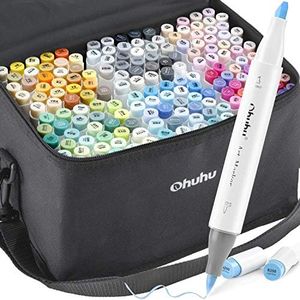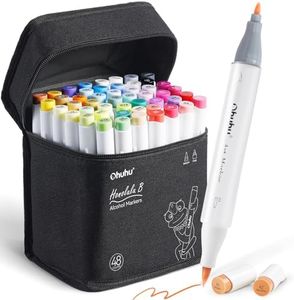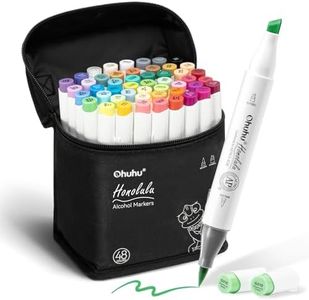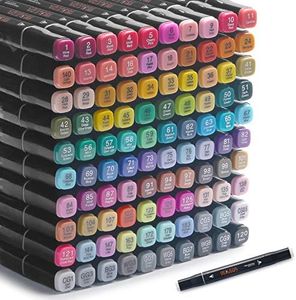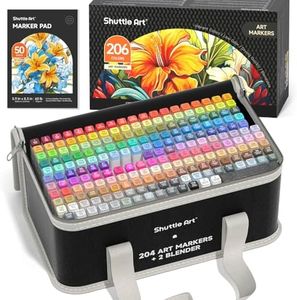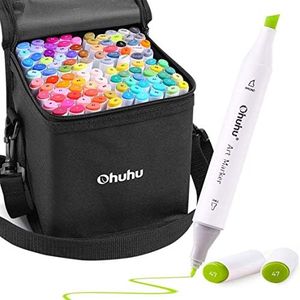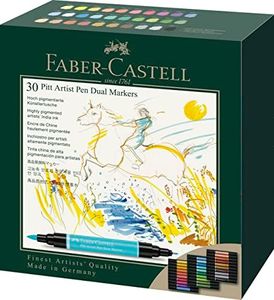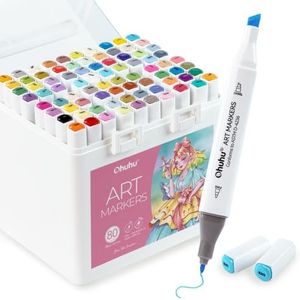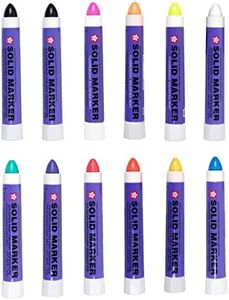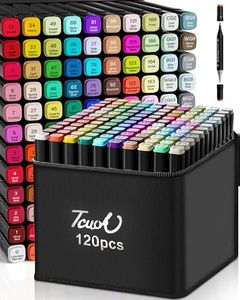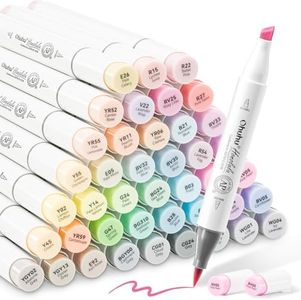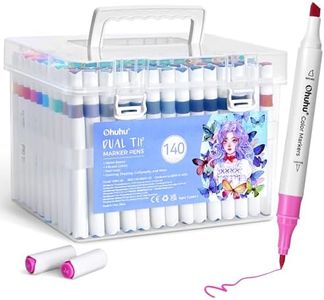We Use CookiesWe use cookies to enhance the security, performance,
functionality and for analytical and promotional activities. By continuing to browse this site you
are agreeing to our privacy policy
10 Best Art Markers
From leading brands and best sellers available on the web.Buying Guide for the Best Art Markers
Choosing the right art markers can really help you enjoy your artwork and achieve the look you desire. Art markers come in many varieties, each designed for different needs—from casual coloring and sketching to professional illustration and design. It's important to think about what projects you'll use the markers for, your preferred art style, and how much control and vibrancy you want over your colors. The right markers will feel comfortable in your hand, suit your drawing technique, and deliver the kind of results you’re aiming for.Ink TypeInk type refers to the substance in the marker that delivers the color. There are mainly two types: alcohol-based and water-based inks. Alcohol-based inks are known for smooth blending, vibrant color, and quick drying, making them popular with illustrators and designers. Water-based inks are less likely to bleed through most papers, easier to control for casual users, and can often be blended with water for watercolor-like effects. If you need bold, professional illustrations or plan to layer and blend colors a lot, alcohol-based ink is a good choice. For general coloring, craft projects, or work with children, water-based ink is likely better.
Tip ShapeThe tip, or nib, of an art marker shapes how the ink touches the paper. There are fine tips for detailed lines, broad tips for filling large areas, and brush tips that mimic a paintbrush for smooth strokes and blending. Some markers are double-ended and offer two types (e.g., fine and broad) in one. If you like precise outlining or intricate designs, look for fine tips. If you cover big spaces or work with bold strokes, a broad chisel tip works well. Brush tips are great if you want expressive lines and enjoy blending. Consider what kinds of marks you want to make most often before you choose.
Color RangeColor range refers to how many different colors are available in a marker set. Sets can range from just a few basic colors to hundreds of shades. A large range offers more creative freedom and smoother gradients, but a basic set can be less overwhelming and meet most needs for beginners. If you mainly create simple sketches or coloring pages, a basic set with primary and secondary colors may suffice. If your artwork is detailed, involves lots of shading and blending, or you want every subtle tint, a larger set is ideal.
LightfastnessLightfastness is a marker’s ability to resist fading when exposed to light over time. If your artwork will be displayed or kept for years, lightfast markers are important to preserve the colors’ vibrancy. Markers with high lightfastness keep their color longer, while low-lightfastness markers may fade, especially in sunlight. If your work is for practice, casual projects, or digital scanning, lightfastness may not matter. For gifts, sales, or display art, pay extra attention to this characteristic.
RefillabilityRefillability means whether a marker can be refilled with more ink once it runs out, as opposed to being disposable. Refillable markers are more eco-friendly and can be more cost-effective in the long run, especially if you use markers frequently. Non-refillable markers are often less expensive at first but must be replaced when empty. If you are serious about art, plan to use the same markers often, or want to reduce waste, look for refillable versions. For light or occasional use, disposables are often fine.
BlendabilityBlendability is how well you can mix or layer colors without harsh lines. Some markers can be blended right on the paper, especially alcohol-based ones, letting you create gradients and shading. Others are harder to blend, which is not always a problem if you prefer flat, graphic looks. If creating smooth color transitions is key to your art, choose markers known for blending. If you prefer solid, sharp edges or simpler coloring, blendability is less critical.
